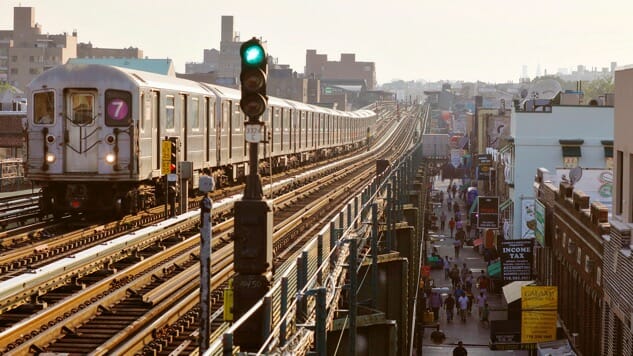Transit Authority: Explore NYC on the 7 Train

London claims the oldest underground train system in the world and Boston the oldest in the Americas, but New York City is home to the most famous. The NYC subway opened in 1904, and the century-old 7 Line travels through several ethnic enclaves between the 34 St/Hudson Yard station in Manhattan and Flushing/Main St in Queens, earning the nickname the International Express. The 7 Line’s fame is such that the White House included it among the 16 National Millennium Trails honored in 2000 for historical and cultural value. The only subway line on the list sat alongside such iconic routes as the Underground Railroad, the Appalachian Trail and the Lewis & Clark Trail. The White House characterized the International Express as “a metaphor for the migration of all the world’s people to America’s shores.”
A traveler doesn’t need 80 days to go around the world on the 7 Line. Buy an unlimited-use week pass (single-day passes don’t exist) for $31 (as of December 2016), and start traveling the globe without ever leaving NYC. As this adventure includes many culinary stops, order small bites at as many spots as your belt will allow.
34 St-Hudson Yards/Times Sq-42 St
The Hudson Yards will truly be something when phase two of the work-live-play development is completed in 2025, but it is not there yet. Likewise, Times Square qualifies as Dante’s 10th Circle of Hell, so feel free to skip these first two stations.
5 Ave
The 5 Ave station is the best place to start if embarking on this journey from Manhattan. Located at West 42nd Street and Fifth Avenue, the station sits underneath the New York City Library where the Ghostbusters crew encountered their first real spirit in the 1984 film. Non-locals might enjoy a stroll north on Fifth Avenue to see the legendary stretch of overpriced designer shops that start several blocks up, and the 19th-century Neo-Gothic St. Patrick’s Cathedral at East 50th Street kind of/sort of contrasts the materialism that surrounds it.
Grand Central

Image: NYC & Company/TaggerYanceyIV
Visiting a train station might sound strange, but Grand Central qualifies as a U.S. National Historical Landmark. While the original structure opened in 1871, the rebuilt Beaux-Arts style terminal celebrated its millennial anniversary in 2013. Surprisingly, the 48-acre Grand Central is home to several first-rate dining options, from the not-so-fast-food Shake Shack to the New Nordic restaurant Agern. The latter, opened by Noma co-founder Claus Meyer, has superstar Icelandic chef Gunnar Gíslason manning the pots and pans.
Vernon Blvd-Jackson Ave
This is where the International Express gets interesting! The first stop east of the East River is Long Island City, Queens, an industrial wasteland-turned-condo jungle with gorgeous views of midtown Manhattan. Head west on 50th Avenue for riverfront parks with front-row city views, which include the United Nations directly across the water. Hungry? Head straight to Casa Enrique, an acclaimed Mexican restaurant that scored Queens its first Michelin star.
-

-

-

-

-

-

-

-

-

-

-

-

-

-

-

-

-

-

-

-

-

-

-

-

-

-

-

-

-

-

-

-

-

-

-

-

-

-

-

-











































